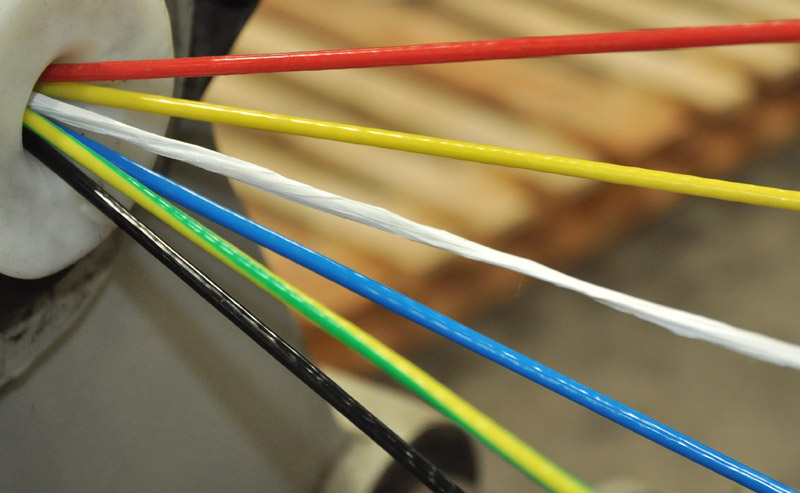American Journal of Science and Arts
페이지 정보

본문
However, many inconsistent implementations and extensions to the basic format exist. However, when the same A-device is plugged into another USB system or a dedicated host becomes available, it can become a device. USB OTG recognizes that a device can perform both Host and Peripheral roles, and so subtly changes the terminology. The device controlling the link is called the Host, while the other is called the Peripheral. The device connected to the "A" end of the cable at start-up, known as the "A-device", acts as the default host, while the "B" end acts as the default peripheral, known as the "B-device". After initial startup, setup for the bus operates as it does with the normal USB standard, with the A-device setting up the B-device and managing all communications. At the same time, a B-device will generate SRP (see below) and wait for the USB bus to become powered. The specifications require the bus be kept within a minimum and maximum common mode bus voltage but do not define how to keep the bus within this range. When a 1 is sent the DATA1 wire is pulled to a low voltage while DATA0 stays at a high voltage. 5 VDC. When a 0 is sent the DATA0 wire is pulled to a low voltage while the DATA1 wire stays at a high voltage.
The Wiegand interface uses three wires, one of which is a common ground and two of which are data transmission wires usually called DATA0 and DATA1, alternatively labeled "D0" and "D1" or "Data Low" and "Data High". USB OTG does not preclude using a USB hub, but it describes host-peripheral role swapping only for the case of a one-to-one connection where two OTG devices are directly connected. The IRQ lines are typically configurable in the hardware as well. To do this, parallel ports require multiple data lines in their cables and port connectors and tend to be larger than contemporary serial ports, which only require one data line. We have a global presence that has been established by offering components, cables and systems of exceptional quality. In this configuration, the flight control systems must simulate "feel". WTIC-TV and WGN America were initially not included in this dispute, but on August 24, Tribune pulled WTIC in Connecticut and WGN from Cablevision's Connecticut and Optimum West systems. So, in spite of these high rates, the dividend on the ordinary stock of the West African cable companies averaged only 2½ per cent for the last five years of the nineteenth century. The high signaling level of 5 VDC is used to accommodate long cable runs from card readers to the associated access control panel, typically located in a secure closet.

Therefore, most Wiegand formats used in physical access control are less than 37 bits in length. USB OTG introduces the concept of a device performing both Host and Peripheral roles - whenever two USB devices are connected and one of them is a USB OTG device, they establish a communication link. In the absence of USB OTG, cell phones often implemented Peripheral functionality to allow easy transfer of data to and from computers. Attach Detection Protocol (ADP): Allows an OTG device, embedded host or USB device to determine attachment status in the absence of power on the USB bus, what is control cable enabling both insertion-based behavior and the capability to display attachment status. The latest version of the supplement also defines behavior for an Embedded Host which has targeted abilities and the same USB Standard-A port used by PCs. The choice between host and peripheral roles is handled entirely by which end of the cable the device is connected to. Such phones could not readily be connected to printers as they also implemented the peripheral role. If implementing standard USB, devices must assume one role or the other, with computers generally set up as hosts, while (for example) printers normally function as a Peripheral.
On the other hand, data networks which store and forward messages using computers had limited connectivity, usually did not have sufficient bandwidth for digitised voice and video signals, and suffer from unacceptable delays for the real-time signals. The rise of the Internet and usage of email in the 1990s largely put an end to dedicated telegraphy networks. The contract also includes the cable networks National Geographic Wild, Fox Business, and Fox Deportes (formerly Fox Sports en Español). It does so by periodically measuring the capacitance on the USB port to determine whether there is another device attached, a dangling cable, or no cable. Modern devices use an integrated circuit called a UART to implement a serial port. For instance, a computer printer is normally a device, but when a USB flash drive containing images is plugged into the printer's USB port with no computer present (or at least turned off), it would be useful for the printer to take on the role of host, allowing it to communicate with the flash drive directly and to print images from it. Role swapping does not work through a standard hub, as one device will act as a host and the other as a peripheral until they are disconnected.
